



Demolished Historic Stone Architecture
The houses we offer are ENDANGERED. In the next decade, these structures will be repurposed or demolished. They are located in the path of inevitable urban redevelopment. Our goal is to move them to estate sites where they recover their intrinsic value far in excess of the cost of doing the work.
ResErections has been working to save historic stone buildings for 15 years. We have identified scores of endangered structures, but as time has passed, seven that we offered over the past years have met their fate in landfills. Each could have been saved at a substantial real estate profit by the new owner, architect, and construction professions.
These are the houses we lost.
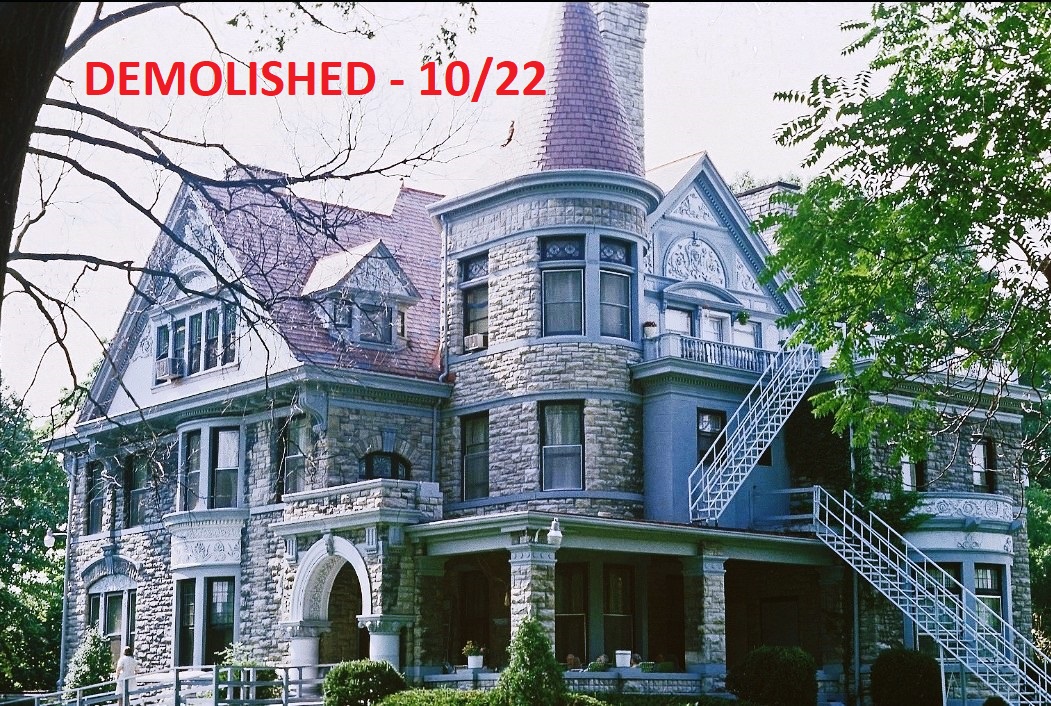
October, 2022 ... The Burkhardt House was demolished. We marketed it for 8 years.
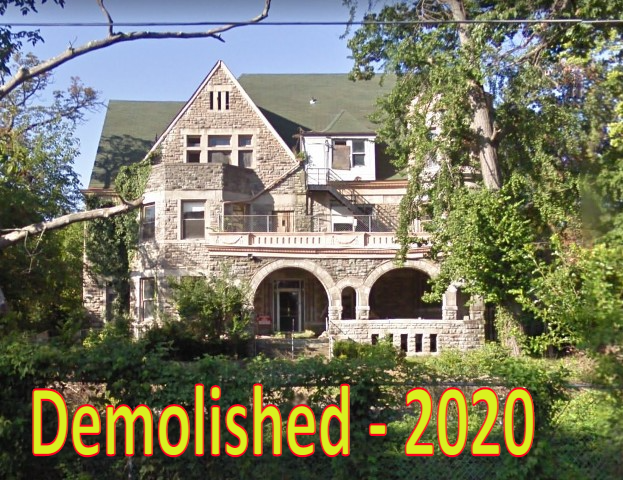
In January, 2020, the 1890 Burton house was demoed. We marketed it for 9 years for about $ 2 million.
In February, 2020, a nature preserve and environmental education center demolished this 1914 Tudor style mansion built from pieces of centuries’ old English manor houses. “The New York Herald described the house as “probably the first completely antique Tudor house which was ever been constructed in America… Every particle of material used in the structure once formed a part of some ancient English dwelling.”“
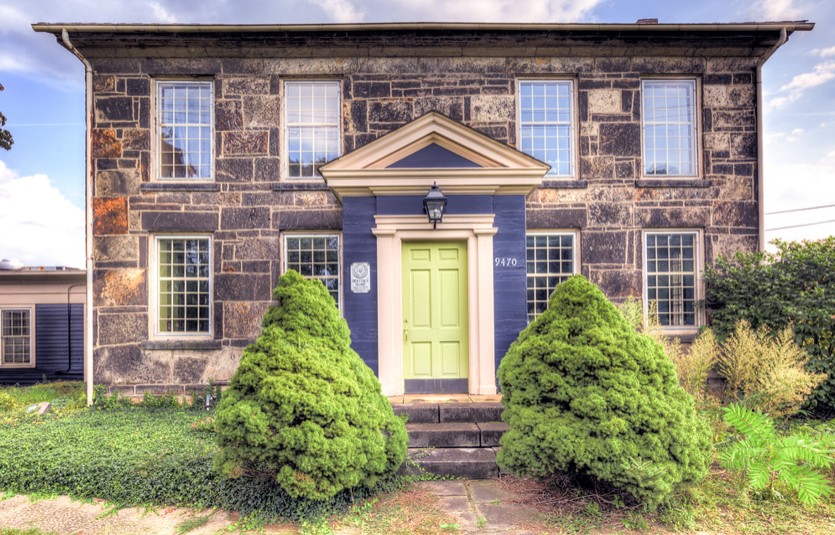
In 2021, the Sawyer Tavern, an 1843 Georgian structure was demolished to make way for a grocery.

In 2017, an 1846 Pioneer Inn was demolished to clear reservoir land
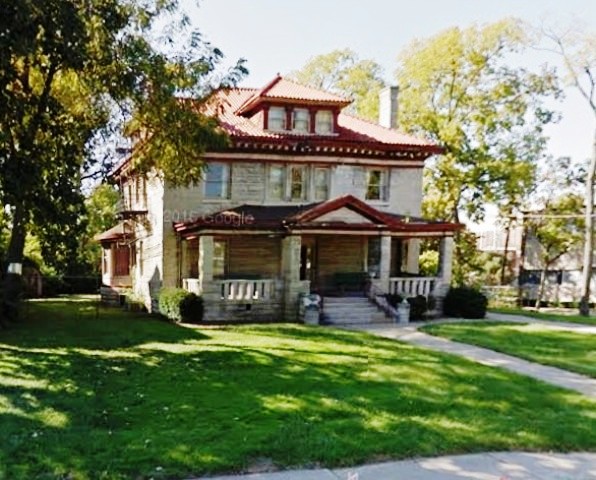
Wonderful gilded age 1900 Prairie Style - American FourSquare home. Authentic details, a true classic design, this white rockfaced limestone house was located in a fine neighborhood and demolished in 2018 to make way for a hospital expansion. The epitome of the post-Victorian "comfortable house", the FourSquare is about dignified self-containment. Massive, embellished, conservative. Boxey shaped, with hipped roof, wide porch, large windows, and quiet style. This big - 2 1/2 story - 6,300 sqft house was a beautiful white rock-faced limestone structure with wide eaves, large central dormers, pedimented porch roof, ornate wood trim, dental molding, a red Mission style tile roof, and a large bay window dining room. Built to last for generations.
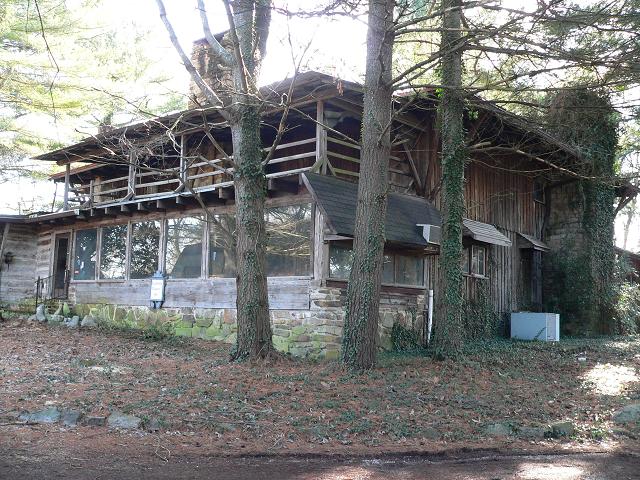
In 2014, the historic 1843 'Scarecrow'Tennesee Inn was demolished to make room for development.
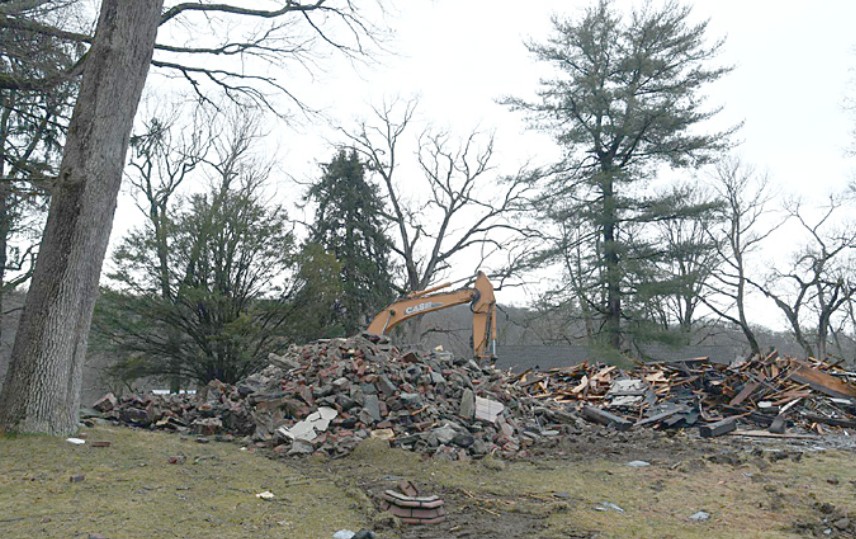
It was beautiful two days ago !
Planned demolition sneaks up on buildings, as desirable redevelopment efforts function privately until the demolition permit is issued. Then, the window for saving the building is a matter of weeks and can only be changed with cash in hand or lawyers. Developers do not want fights with preservation advocates (some of them are unrealistic) before the axe is already falling. The buildings are going to be removed for good reasons by seasoned construction and development firms with institutional and government support.
It takes 2 days to demolish, but 2 months to document and disassemble a frame house. Worthy endangered houses can be profitably moved by local professional architects, engineers, and construction tradesmen resulting in a historic, modern, efficient house on desirable sites worth far more than it cost.
Developments that threaten worthy houses should investigate an opportunity to profit from disassembly and marketing the house in the months of planning for a redevelpment of a historic site. An active market of buyers could save many historic stone and frame structures at a substantial profit to the redevelopment project supply chain.
There are many marvelous gilded age stone mansions and building facades located in the path of development or in impoverished urban areas that could be saved by relocation. There are scores of these structures from Maine to Oklahoma.
“The problem is national in scope. But in historic centers such as Philadelphia, it's particularly acute—prompting the Living Legacy Alternative Stewardship Project, sponsored by the William Penn Foundation and Pew. In 2000, Pew's Heritage Philadelphia Program discovered more than 300 historic house museums in the Philadelphia region alone. Fewer than 10 percent of those have endowments of any size, and more than 80 percent are facing preservation and maintenance costs of about $1 million each, while their operating budgets average only $100,000. If nothing changes within the next decade, the research suggests, dozens will be left with no caretakers, no money and no plans for rescue.”
In America, preservation and restoration is a very profitable billion dollar industry. Maintenance of public and historic structures is high art, with many professional practitioners. There is no shortage of work to do, and the majority of the work is paid for institutionally, by government, taxpayers, or other cultural organizations. It is by no means a non-profit business. Professional preservationists are obligated to selectively and responsibly put limited talents and money where the best of heritage is preserved rather than telling others what their limited resources and public tax money should be spent on. Revenue motivated advocates often whip up well meaning public hysteria and rely on legal obstructionism to preserve old structures under the guise of "non-profit" - but salary paying organizations. Good solutions to reclaiming and using historic structures are criticized as not good enough, resulting in decay and loss, and worthy structures are demolished because enough money could not be found to do a better thing. Many structures are located in areas where it is impractical to renovate on site. Reproachful jewels left in a ruined landscape. Moving endangered structures is a far better result than scavenging for individual components and ultimate demolition.
Public financing is a burden ... so many great structures are destroyed. A better solution is to find private purchasers that want to build private estates with worthy architectural and historic merit. The number of so-called Ultra-High-Net-Worth Individuals, those with $30 million or more in net assets, grew 9.3% to 610,568 last year. North America's UNWHIs led the charge, growing 11.2% in ranks to 233,590. They are the market. The AEC industry works with them.
The process of demolition may recover material for recycling as construction waste, but the time pressures of job completion force fast removal and disposal of the material, so little effort is expended to recover material in reusable form. Irreplacable stone is lost ... wood us usually burned. The value of what can be recovered is trivial compared to the value of the architectural art lost.
The only way to save these great stone buildings is to get the funds to properly disassemble and relocate them. It is not inexpensive and requires the collaboration of professional architecture, engineering, construction, and logistics personnel. It takes planning, expertise, and extensive computing technologies. Each structure must have architectural merit, and yield a new property that is worth more than its cost. We specialize in majestic stone buildings from the Amercan Gilded Age ... 1830's to 1910, offering modern, efficient, estate quality homes, with fast ROI's above 100%. In the past three years, we have added several pre-revolution historic Colonial frame houses that have been saved and are well worth rebuilding.
Visitors frequently refer endangered worthy houses to ResErections. If you would like to recieve our monthly newsletter please Subscribe here.
Telephone (800) 392-2421 Office (513) 376-6235 Cell (513) 212-8496 We would enjoy hearing from you by phone or email. Please leave messages if we miss you. Email is best.
- Electronic mail
Info@ResErections.com
This Site has been active for 15 years.
